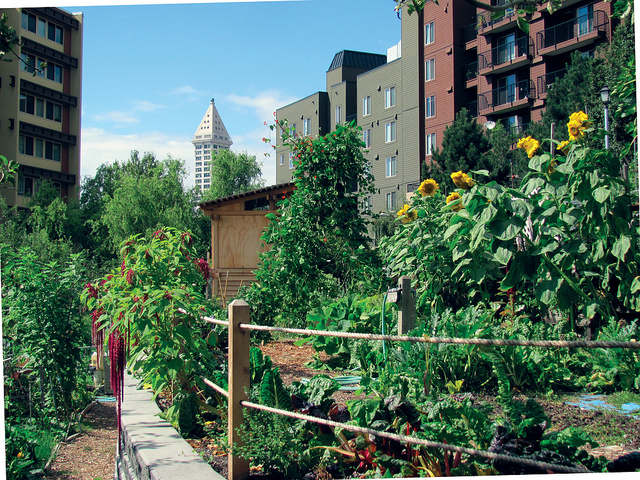Get This Report about City Blooming
Wiki Article
City Blooming Can Be Fun For Everyone
Table of ContentsThe Only Guide for City BloomingThe smart Trick of City Blooming That Nobody is Talking AboutCity Blooming - TruthsThe Greatest Guide To City BloomingSee This Report about City Blooming
Interested in growing food up for sale in the City of Chicago? Considering starting a neighborhood garden? Modifications to the Chicago Zoning Ordinance permit farming usages like neighborhood yards and urban ranches in many parts of the city. Below is a listing of often asked questions concerning the rules and regulations that cultivators need to consider when intending an urban agriculture task.
The zoning amendment does not modify any type of other codes taking care of composting, structure authorizations, buying or leasing City possessed property, company licenses or ecological contamination. There are existing codes that control these issues and they stay in full effect and may be appropriate to your task. Community gardens are typically owned or managed by public entities, public organizations or community-based organizations and maintained by volunteers.
Urban farms expand food that is planned to be sold, either on a nonprofit or for-profit basis. Due to their industrial objective, urban farms require a company permit.
The 6-Minute Rule for City Blooming
The quantity of garden compost material can not go beyond 25 cubic lawns at any provided time according to the criteria in 7-28-715 of the City's Municipal Code. Since the dirt at many new garden websites needs changing, compost, soil, timber chips, or other materials can be obtained to build or boost the expanding room.
If a building permit is required then the hoophouse will be thought about an accessory building. You can figure out even more regarding the building permit demands by speaking to the Department of Structures. The 25,000-square-foot dimension restriction is intended to protect against a solitary community garden from dominating an offered block or detracting from the block's existing household or business character.
The restriction does not put on yards located in Public Open Area (POS) areas. Can there be greater than one area yard that is 25,000 square feet on a solitary block? Yes. The dimension limit relates to private gardens, not to individual blocks. No. Fencing is not required, nevertheless, gardens that have huge car park areas might be required to set up secure fencing or other landscape design functions.
The Definitive Guide to City Blooming
B1 & B2 districts require that all industrial use activities be carried out indoors. R areas restrict commercial activity. The policies show the function and intent of the Zoning Code. Is secure fencing needed for urban ranches? Yes. Fences might be needed, along with landscaping and testing, for certain parking areas and exterior work or storage areas depending on location and the details task taking area.Urban farms call for structure permits and zoning authorizations prior to building and construction (eco-friendly practices). Various other forms of city evaluation might be required depending on specific structures, activities, dimension, landscape design, licensing, public health and stormwater monitoring concerns.
The Department of Company Affairs and Consumer Protection can aid figure out the particular type of organization certificate that's needed. Off road parking is needed for most business tasks in Chicago. The required number of auto parking spaces is based on the number of workers working on website and not the square video footage of the growing area.
Unknown Facts About City Blooming

Yes. A city farm can offer compost material produced on site, however, the operation needs to follow the laws in 7-28-715 of the Chicago Municipal Code. Yes. Aquaponic systems Read More Here are permitted indoors on metropolitan ranches in several zoning areas. A zoning testimonial and structure authorization is required in order to mount frameworks or systems and an organization license is required as explained over.
As much as 5 hives or colonies of honey may be kept as an accessory usage. Beekeepers must register with the Illinois Division of Agriculture. To find out more concerning the proposed zoning modification you might get in touch with the Division of Real Estate and Economic Development, Bureau of Planning and Zoning at 312.744.8563.
Farming in cities and city areas An urban farm in Chicago. Urban farming refers to various practices of growing. https://clean-gondola-5c7.notion.site/City-Gardening-Transforming-Urban-Spaces-7213d2fdc6c341e8bd8975e4c2f79126?pvs=4, processing, and dispersing food in urban areas. The term also relates to the area tasks of pet husbandry, aquaculture, beekeeping, and gardening in a city context. Urban agriculture is distinguished from peri-urban agriculture, which happens in backwoods beside residential areas.
The Facts About City Blooming Uncovered
, who look for to develop social networks established on a shared ethos of nature and area holism. These networks can create by way of formal institutional support, coming to be integrated right into neighborhood community planning as a "transition community" movement for sustainable metropolitan growth.In either instance, the a lot more direct accessibility to fresh vegetable, fruit, and meat products that may be become aware via urban farming can improve food security and food security while reducing food miles, leading to lower greenhouse gas emissions, consequently contributing to climate adjustment mitigation. Some of the initial evidence of metropolitan agriculture originates from Mesopotamia.
Report this wiki page